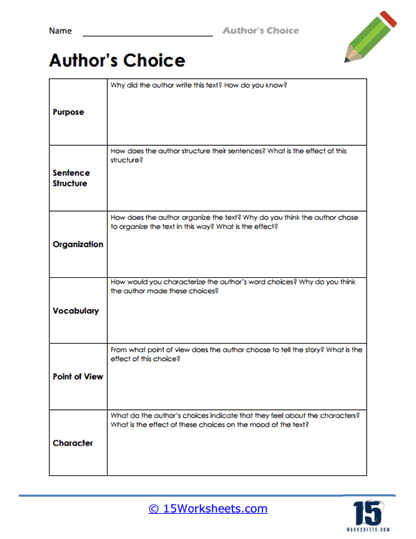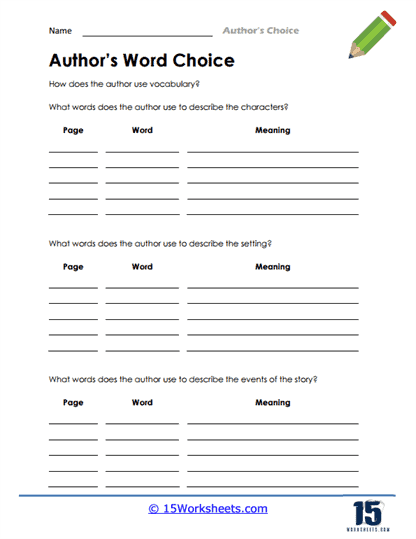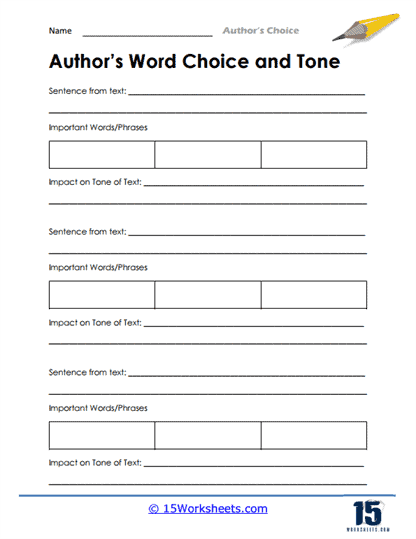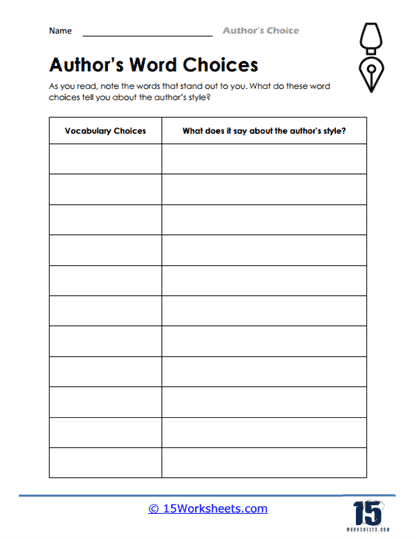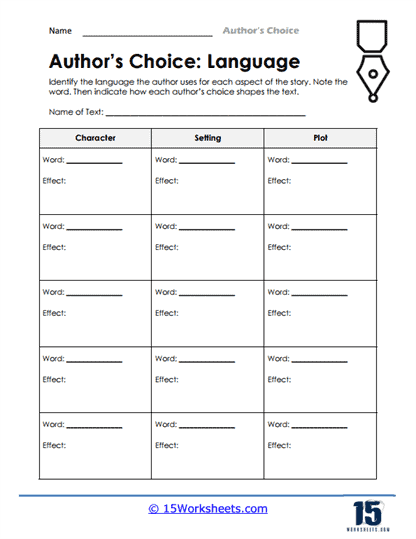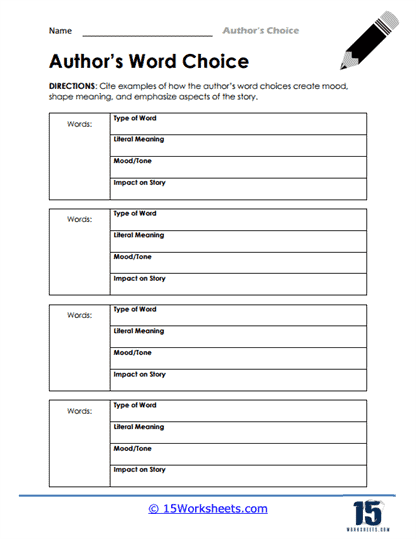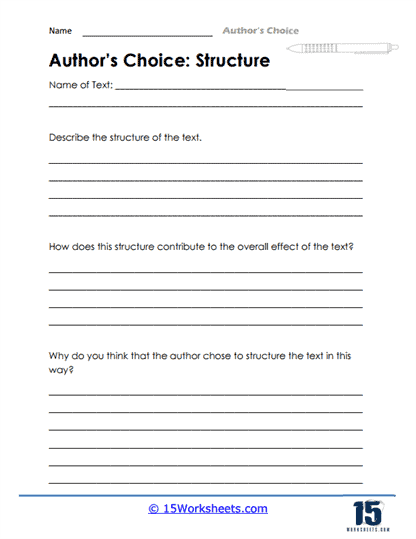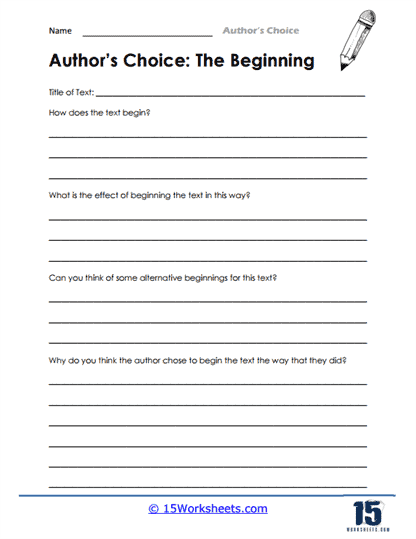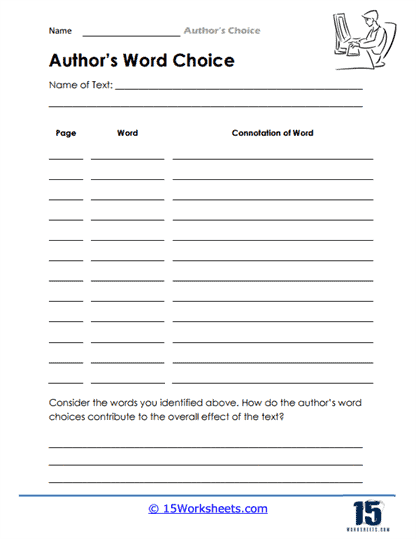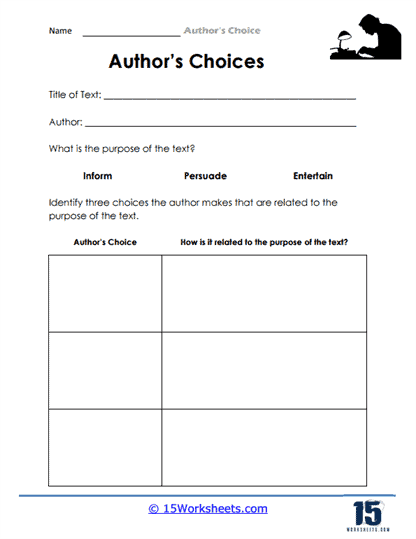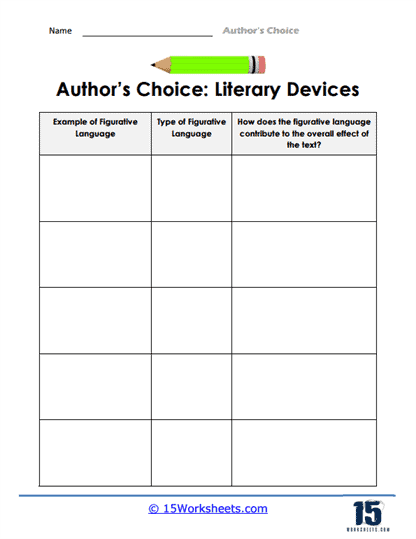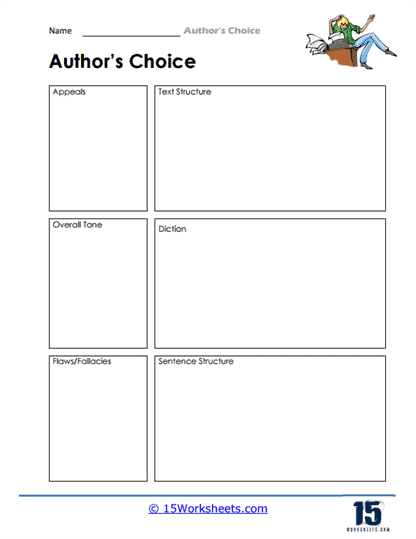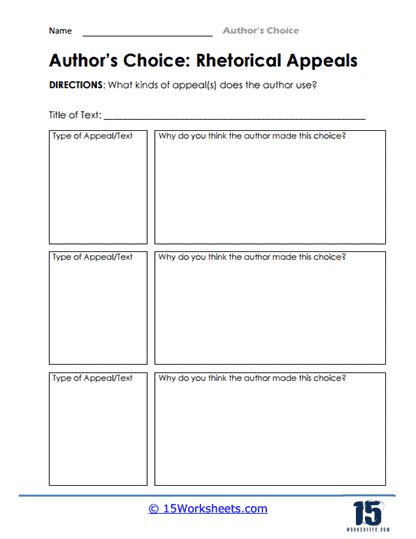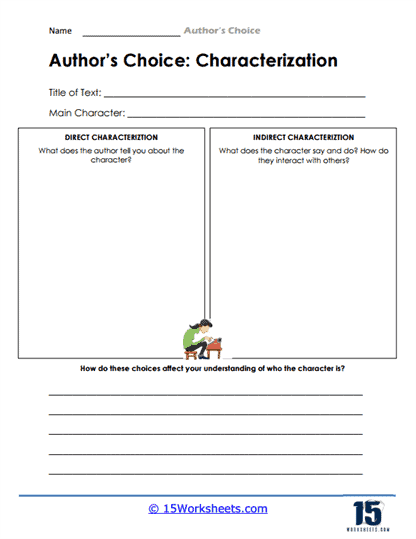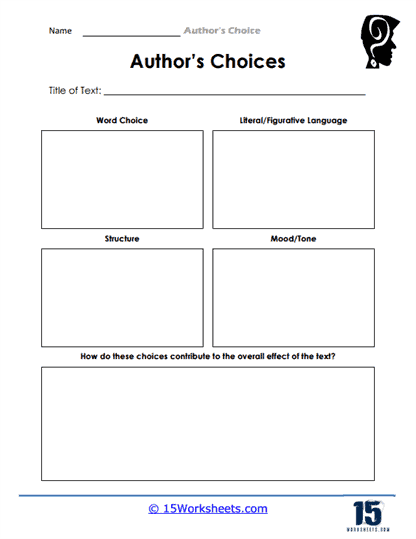Author's Choice Worksheets
All About These 15 Worksheets
These worksheets are designed to help students analyze the author’s choices in a piece of writing, including choices about language, style, tone, and perspective. They include a variety of activities that encourage critical thinking and analysis of literary techniques. Some of the activities that are included in these worksheets involve the following.
- Identifying literary techniques: Students may be asked to identify literary techniques such as metaphor, imagery, or symbolism, and to analyze how they contribute to the meaning of the text.
- Analyzing language and style: Students are encouraged to analyze the author’s use of language and style, including choices about diction, syntax, and tone.
- Examining point of view: Students are asked to consider the author’s point of view and how it affects the meaning of the text.
- Determining rhetorical appeals and characterizations: Students are asked to figure out the rhetorical appeals an author uses, along with analyzing the author’s characterizations in the narrative.
Overall, these worksheets can help students to develop a deeper understanding of literary techniques and to appreciate the author’s craft. By analyzing the author’s choices in a piece of writing, students can learn to read more critically and to appreciate the subtleties of language and style.
How to analyze an author’s choices
Analyzing an author’s choices in their writing can be challenging, but here are some tips for students to help them effectively analyze an author’s choices.
- Read closely: Before attempting to analyze an author’s choices, it’s important to read the text closely and carefully, paying attention to the language, style, tone, and perspective.
- Identify literary techniques: Look for literary techniques such as metaphor, imagery, symbolism, or allusion, and consider how they contribute to the meaning of the text.
- Analyze language and style: Consider the author’s use of language and style, including choices about diction, syntax, and tone. How do these choices contribute to the overall meaning and impact of the text?
- Examine point of view: Consider the author’s point of view and how it affects the meaning of the text. How does the author’s perspective shape the story or message?
- Analyze characterization: Consider the author’s characterization of the characters in the text. How do the characters’ personalities, motives, and actions contribute to the meaning of the text?
- Consider the context: Consider the historical, cultural, and social context in which the text was written, and how this context may have influenced the author’s choices.
- Practice: Analyzing an author’s choices is a skill that takes practice. Read widely and critically, and practice analyzing the choices that authors make in their writing.
Analyzing an author’s choices requires careful reading, critical thinking, and attention to detail. By following these tips, students can develop their ability to analyze and interpret texts effectively.

